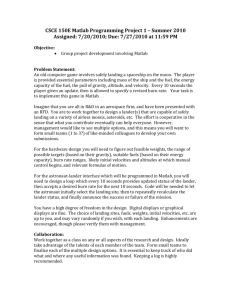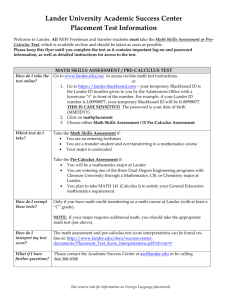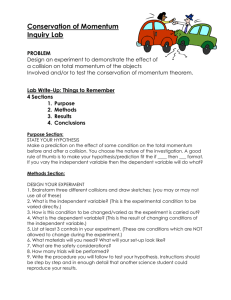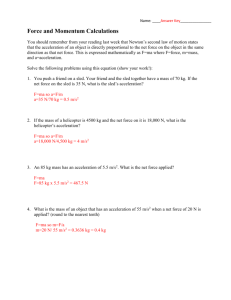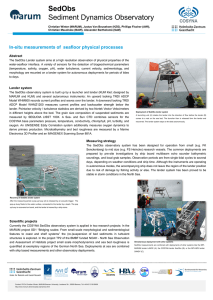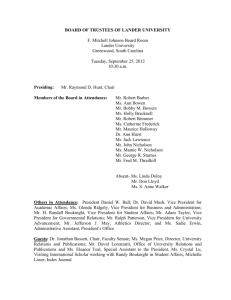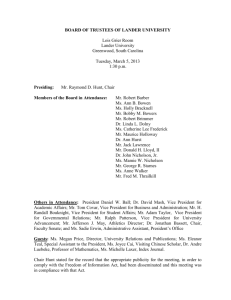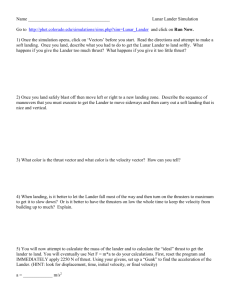Momentum Transfer Ezra
advertisement
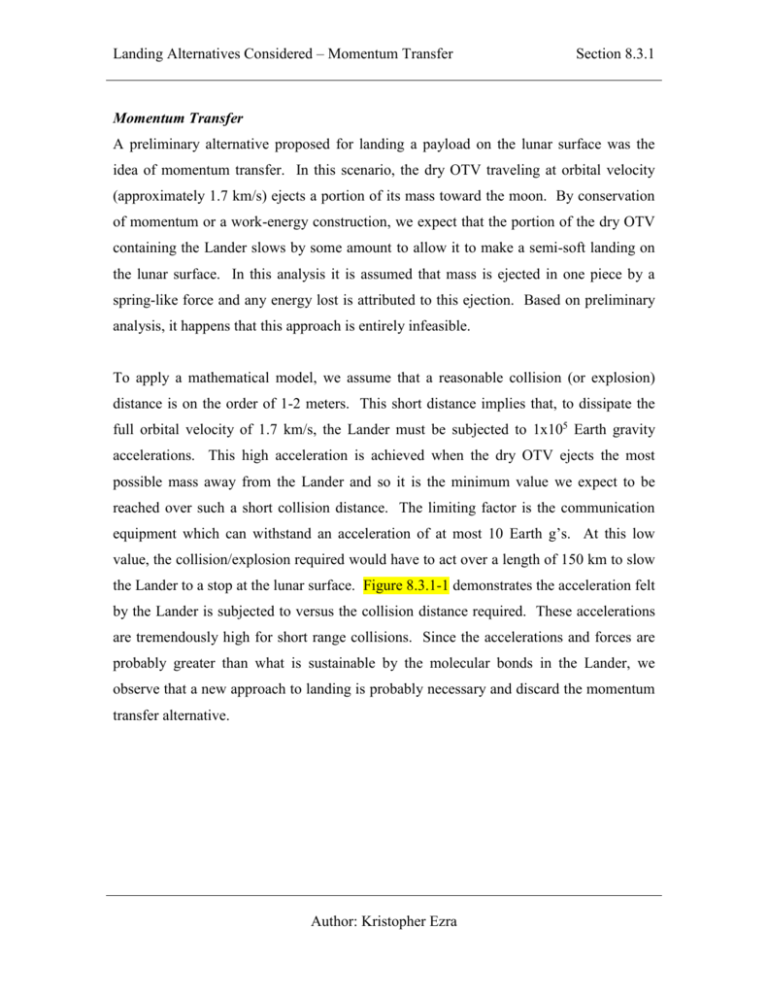
Landing Alternatives Considered – Momentum Transfer Section 8.3.1 Momentum Transfer A preliminary alternative proposed for landing a payload on the lunar surface was the idea of momentum transfer. In this scenario, the dry OTV traveling at orbital velocity (approximately 1.7 km/s) ejects a portion of its mass toward the moon. By conservation of momentum or a work-energy construction, we expect that the portion of the dry OTV containing the Lander slows by some amount to allow it to make a semi-soft landing on the lunar surface. In this analysis it is assumed that mass is ejected in one piece by a spring-like force and any energy lost is attributed to this ejection. Based on preliminary analysis, it happens that this approach is entirely infeasible. To apply a mathematical model, we assume that a reasonable collision (or explosion) distance is on the order of 1-2 meters. This short distance implies that, to dissipate the full orbital velocity of 1.7 km/s, the Lander must be subjected to 1x105 Earth gravity accelerations. This high acceleration is achieved when the dry OTV ejects the most possible mass away from the Lander and so it is the minimum value we expect to be reached over such a short collision distance. The limiting factor is the communication equipment which can withstand an acceleration of at most 10 Earth g’s. At this low value, the collision/explosion required would have to act over a length of 150 km to slow the Lander to a stop at the lunar surface. Figure 8.3.1-1 demonstrates the acceleration felt by the Lander is subjected to versus the collision distance required. These accelerations are tremendously high for short range collisions. Since the accelerations and forces are probably greater than what is sustainable by the molecular bonds in the Lander, we observe that a new approach to landing is probably necessary and discard the momentum transfer alternative. Author: Kristopher Ezra Landing Alternatives Considered – Momentum Transfer 5 3 Section 8.3.1 Work/Energy Based Accelerations x 10 2.5 Accelleration (g) 2 1.5 1 0.5 0 0.5 1 1.5 2 2.5 3 3.5 Collision Distance (m) 4 4.5 5 Fig. 8.3.1-1: Plot of the acceleration the Lander is subjected to versus the collision distance required to slow the Lander from 1.7 km/s to 0 km/s. These accelerations are in multiples of Earth's gravity (g's). (Kristopher Ezra) Author: Kristopher Ezra
